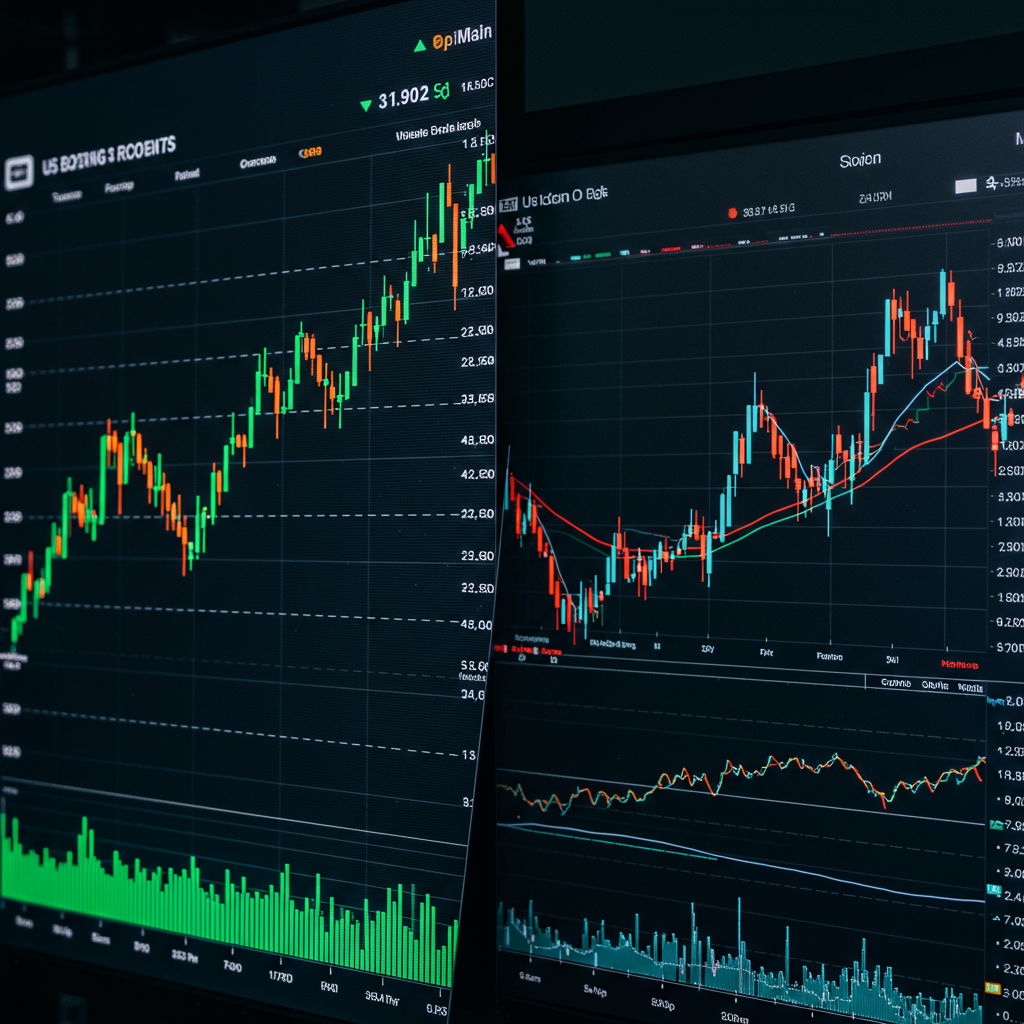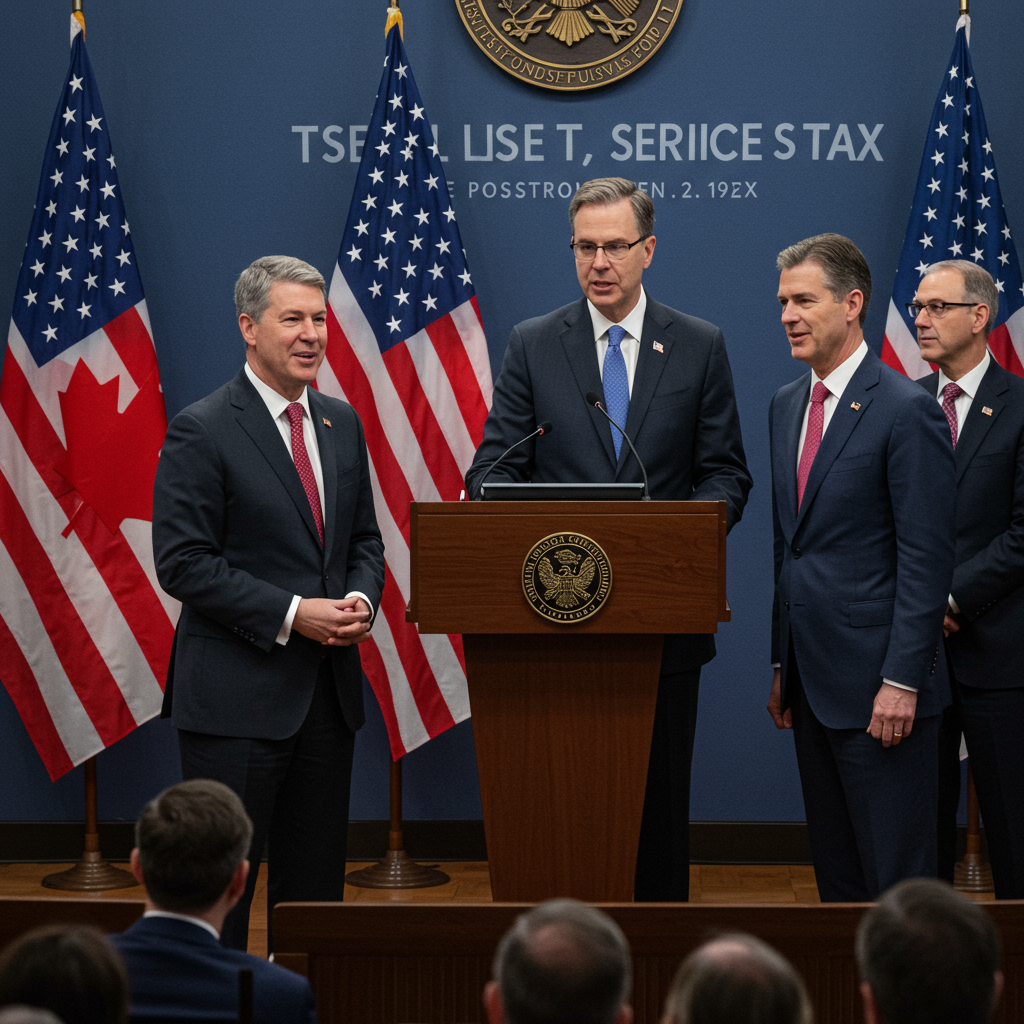Stock futures showed modest gains early Wednesday, signaling a cautious start to the second half of 2025. This upward nudge in futures came after investors rotated out of technology stocks to begin the third quarter. The move reflects evolving market dynamics and a potential shift in sentiment following a period of strong tech-led gains.
Market Snapshot: Opening the Second Half of 2025
As the trading day approached, futures tied to the major U.S. indices indicated slight upward momentum. Dow Jones Industrial Average futures advanced by 69 points. S&P 500 futures registered marginal gains. Nasdaq 100 futures, representing the tech sector, posted a 0.3% rise in early trading.
This quiet start followed a mixed performance in regular trading on Tuesday. The blue-chip Dow managed a solid 400-point climb. In contrast, the broader S&P 500 saw a slight dip of 0.1%. The tech-heavy Nasdaq Composite experienced a more significant loss, falling 0.8%. This divergence highlights the sector rotation underway. Traders appeared to step back from the high-flying tech names. These stocks had previously fueled the market’s robust rebound during the second quarter.
Why the Tech Retreat? Analyzing Sector Rotation
The information technology sector of the S&P 500 bore the brunt of Tuesday’s selling. This sector includes major players like Nvidia, Palantir, and Advanced Micro Devices. The sector index fell by more than 1%. The communications services sector also saw declines exceeding 1%.
Instead of tech, investor capital gravitated towards more defensive or cyclical areas. Healthcare and materials stocks saw increased buying interest. Notable gains in companies such as Amgen, Johnson & Johnson, and UnitedHealth Group provided significant support to the 30-stock Dow. This sector rotation suggests investors may be re-evaluating valuations or seeking safety.
Earlier in 2025, tech stocks, particularly those linked to Artificial Intelligence (AI), experienced periods of sharp volatility. For instance, concerns arose in late January following claims from Chinese AI firms suggesting comparable performance with less expensive chips. This triggered a significant sell-off in key AI stocks like Nvidia. While markets recovered, the July 1st rotation indicates ongoing sensitivity in the sector. Investors may be taking profits after the strong Q2 tech rally or anticipating shifts in market leadership driven by broader economic or policy factors.
Political Headwinds and Policy Uncertainty
Political developments continue to cast a shadow over market certainty. President Donald Trump’s tax-and-spending bill narrowly cleared the Senate on Tuesday. The legislative path remains uncertain. The measure must return to the House of Representatives. Some GOP lawmakers there still hold reservations.
Uncertainty around government policy can breed market volatility. This is especially true concerning fiscal and trade policies. Earlier in 2025, President Trump’s renewed focus on tariffs significantly impacted market sentiment. Threats of new duties on imports from China, Mexico, Canada, and the EU caused widespread unease and contributed to market losses in February. Concerns about trade disputes resurfaced periodically, including potential tariffs tied to migration issues. This ongoing “fast-paced trade policy overhaul” creates persistent uncertainty for businesses and investors.
Jose Rasco, CIO at HSBC Global Private Banking and Wealth Management Americas, commented on the situation. He noted that volatility in fixed income is likely to persist. This will happen “even once they get the bill passed, whatever that looks like,” he said on “Closing Bell: Overtime.” Rasco added, “That’s going to bleed over into the equity markets.” Traders are also monitoring progress on trade deals. President Trump’s 90-day pause on some key tariffs is scheduled to expire next week. The potential re-imposition or expansion of tariffs remains a key risk factor influencing market sentiment.
Economic Data on Deck
Beyond policy, upcoming economic data releases are a focal point for investors. Wednesday’s calendar includes the ADP private payrolls report. This report is due before the market opens. Economists surveyed by Dow Jones anticipate private employers added 120,000 jobs in June. This would represent a significant increase from the 37,000 gain reported in May.
The week’s most anticipated economic event is the comprehensive June jobs report. This crucial data is expected on Thursday morning. Given the holiday-shortened week, these labor market indicators take on added importance. They provide key insights into the health of the U.S. economy and can influence expectations for Federal Reserve monetary policy, although the Fed was widely expected to keep rates unchanged at its upcoming meeting. Softer consumer spending data in January, potentially linked to tariff anxieties, and a sharp drop in the Atlanta Fed’s GDPNow forecast earlier in the year highlighted how economic indicators are being closely watched for any signs of slowdown amidst policy uncertainty.
Corporate Catalysts and Stock Movers
Specific corporate news also drove individual stock movements. Verint Systems saw its shares surge 12% in extended trading. This followed a Bloomberg report citing sources familiar with the matter. The report indicated the company is in discussions with buyout firm Thoma Bravo regarding a potential acquisition. However, the sources cautioned that reaching a final agreement is not guaranteed.
On the downside, healthcare stock Centene pulled back significantly. It dropped over 20% in extended trading on Tuesday. The decline occurred after the company announced it was withdrawing its full-year financial outlook. Such moves can raise concerns about future profitability and guidance visibility for investors.
Earlier periods in 2025 saw major swings in specific tech names like Nvidia, Tesla, and Microsoft, often linked to AI narratives or trade policy fears. While not the primary drivers of Tuesday’s broad sector rotation, these examples underscore the sensitivity of large-cap tech to both specific company news and broader macroeconomic shifts. Conversely, strength in names like Amgen and UnitedHealth demonstrates investor preference shifting towards sectors perceived as more stable or benefiting from different economic trends.
Technical Signals: The Golden Cross
Market technicians are noting a potentially bullish signal on the S&P 500 chart. The index formed a “golden cross” on Tuesday. This technical pattern occurs when a short-term moving average crosses above a long-term moving average. Specifically, the S&P 500’s 50-day moving average crossed above its rising 200-day moving average.
Many traders interpret a golden cross as a bullish sign for momentum. It suggests a shift towards a potential long-term uptrend. Historically, such formations have often preceded further gains. The S&P 500 last formed a golden cross in July 2020. This occurred as stocks were recovering from the significant sell-off induced by the pandemic.
Data from past instances suggests potential upside. The S&P 500 has historically risen over the subsequent six months following the past 11 golden crosses. The index also advanced on a three-month basis after the past nine occurrences.
However, technical signals are not infallible. History provides counterexamples. After the S&P 500 formed a golden cross in May 1990, the index dropped 12% over the next 12 months. Another instance occurred in April 2019. The benchmark index subsequently slid nearly a year later amidst the throes of the Covid-related market crash. While the golden cross indicates positive momentum, it’s crucial to consider it alongside other fundamental and macroeconomic factors shaping the current market landscape, such as policy risks and sector rotation.
Short Selling Landscape
Recent market strength has impacted short sellers. Short sellers bet on stock prices falling. According to S3 Partners, a firm tracking short selling activity, these investors have faced significant losses. Since the market bottom on April 8th, short sellers have lost $300 billion. This represents a 22% loss on their positions.
Over the same period, the major market indices saw substantial gains. The S&P 500 and Russell 3000 indexes each rose by 24%. The Nasdaq Composite, despite recent tech wobbles, is higher by 33% since April 8th. This data underscores the strength of the recent bull run.
Despite the heavy losses, overall short interest remains elevated in 2025. According to Ihor Dusaniwsky, S3’s head of predictive analytics, short interest is still up by $139 billion this year. This is an increase of 10.5%. This suggests many investors still maintain bearish views or are hedging existing long positions.
The largest dollar losses for short sellers since the April low occurred in specific sectors and companies. Technology accounted for the biggest hit, with losses totaling $105 billion through Friday, June 27th. Consumer discretionary (-$41 billion) and industrial stocks (-$37 billion) also cost short sellers dearly. The companies causing the most pain for short sellers in dollar terms were Nvidia, Tesla, and Microsoft – fitting given their strong performance prior to recent tech pullbacks.
Conversely, some short trades proved profitable. The most successful short positions since the April low were in healthcare names. These included UnitedHealth Group, Sarepta Therapeutics, and Bristol-Myers Squibb. This highlights the varied performance across sectors and the potential for downside even within a broadly rising market.
Looking Ahead: Navigating Volatility
As investors settle into the second half of 2025, volatility appears likely to remain a key theme. Policy debates, economic data releases, ongoing trade tensions, and shifts within leading sectors like technology will all influence market direction.
Despite the turbulence, some experts see potential upside. Jose Rasco of HSBC believes that “once these things get resolved and once the [Federal Reserve] gets back in gear, there’s a lot of upside here.” This perspective suggests that while near-term challenges exist, the longer-term outlook could be positive once political and economic uncertainties diminish and monetary policy provides clearer direction. Investors will need to carefully assess incoming information and remain agile in their strategies.
Frequently Asked Questions
Why did tech stocks decline at the start of July 2025?
Tech and communication services stocks experienced a retreat on Tuesday, July 1st, following a strong second-quarter rally. This move appears to be sector rotation, with investors selling high-performing tech names like Nvidia and AMD. Money shifted into sectors like healthcare and materials. This likely represents profit-taking after the Q2 run or concerns over ongoing policy uncertainty impacting growth stocks. Earlier volatility related to AI developments may also contribute to cautious sentiment in the sector.
Where can I find reliable data on market short selling trends?
Data on short selling trends and their impact on specific stocks and sectors is tracked by specialized firms. S3 Partners, mentioned in this article, is one such research firm focusing on tracking short interest and its financial impact on investors. Their reports can provide detailed insights into which sectors and companies are most heavily shorted and where short sellers are experiencing gains or losses.
What factors are expected to drive market volatility in the second half of 2025?
Several factors are poised to contribute to market volatility. Political developments, such as the tax-and-spending bill progression and potential re-emergence of trade tariff threats as pauses expire, create uncertainty. Key economic data releases, particularly major jobs reports, will also influence sentiment and Federal Reserve expectations. Ongoing shifts within the technology sector, corporate earnings reports, and the interpretation of technical signals like the golden cross will also play significant roles in shaping market movements.




